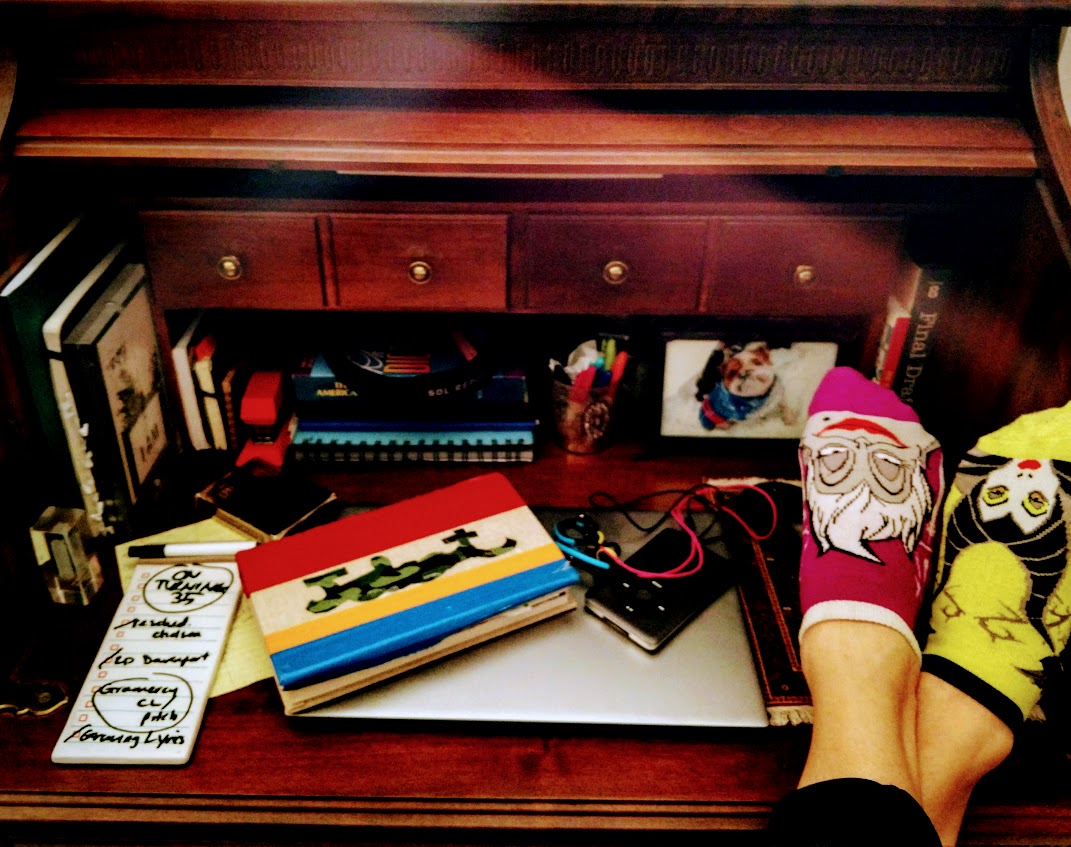“This is our family, this is the lot
After I go, this is all that you’ve got, honey.”
-Stephen Sondheim (“Children and Art”)
Below is my response to Turning 35 amidst last week’s (continued) shitstorm in American politics – one paired, mercifully, with a side-dish of Tom Hanks-as-Mr. Rogers press photos.

Mr. Rogers famously advised his audience to “look for the helpers” in times of disaster, as his mother had counseled him – a lovely sentiment.
Maybe it’s not enough just to “look” anymore…
While out on a late-September Sunday morning walk, I passed through the Medieval Festival at Fort Tryon Park. Stopping briefly to stretch, I watched three kids – all about age six – hard at play beneath the bleachers of a jousting arena. The two boys – brothers, by the looks of it – donned matching swords, shields, and helmets their parents had purchased for them that day in the faire’s marketplace; the girl – no relation – rocked handmade Gryffindor robes and fought with a stick, pre-labeled “HERMIONE GRANGER WAND” in child-grade calligraphy. Both items had been designed thoughtfully – and most certainly worn before this particular occasion. Homegirl planned ahead – and had her own damn idea about how to dress for a magic-filled festival.
The boys questioned the integrity of her makeshift magic wand: “that’s just a stick!” / “That’s not magic!” Her response: “I know the magic’s in there, I put it there myself.” Magic, indeed: they accepted her testimony on the spot and, together, formed a multi-genre, multi-gender, (and seemingly multi-class) set of Three Musketeers, sparring through a combination of spells and swordplay, making up the rules of their game along the way. Someone commented to the crowd forming around them: “looks like the real show’s down here, huh?”
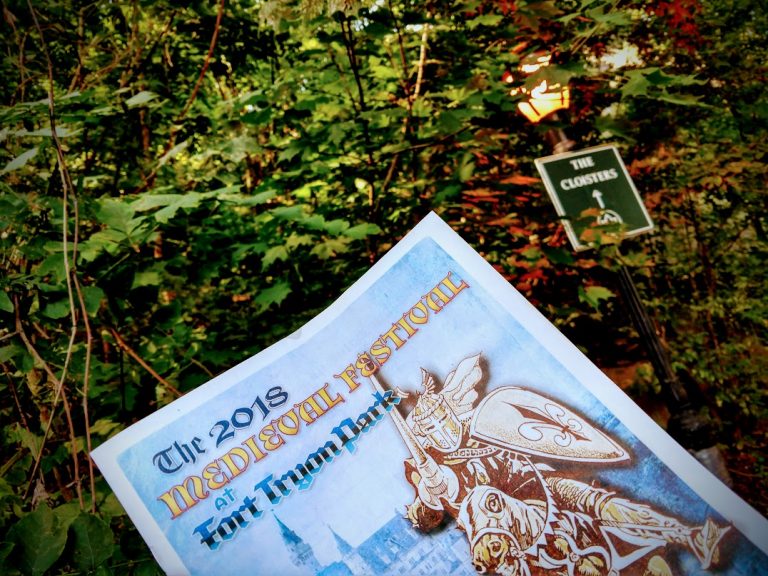
Children at play ranks among my favorite forms of entertainment – and I am lucky to live park-adjacent, my neighborhood vantage point a variety pack of kids discovering their inner-magic out in the open air.
I am fated to see theatre in all of it.
This fall, I’m working once more with a well-regarded college access nonprofit, helping interview thousands of high school seniors for full-tuition college scholarships. My current task: cultivate and capture a diverse collection of life stories, at a pace of ten per day, all from New York City teens eager for higher education.
I see theatre in each of them, too.
My theatre-tinted glasses come, no doubt, from my Grandma Mazer – who traded a solid shot at jazz singer stardom for a music director position at a local children’s theatre near Detroit. She believed in earnest – as I do – that theatre carries in it the power to change lives. She passed that dogma down to her daughter; together, they passed it to me; I pass it on to my…notebooks. (For now.)
This past week I turned 35 – the age my upbringing led me to believe was the “baby deadline.” (Meaning: if I didn’t have a child by now, I never would.) I cannot cite a source for this belief, beyond some blurry childhood memory I must have filed before I learned to distinguish fact from familial lore.
Whether or not I ever believed it, the “final countdown” weighed heavily on my mind…
I spent my final evening of Age 34 at Grandma Mazer’s old writing desk, windows open wide, crickets chirping for companionship over a baseline set by heavy raindrops crash-landing on the metal of my building’s fire escape. Their near-midnight serenade to summer’s near-end served a second purpose: the soundtrack to underscore my completion of another circle ‘round the sun.
Back in the mid-80s – at the very same desk – Grandma Mazer filled out a pale pink, spiral-bound book, describing her first experiences with me after my birth.
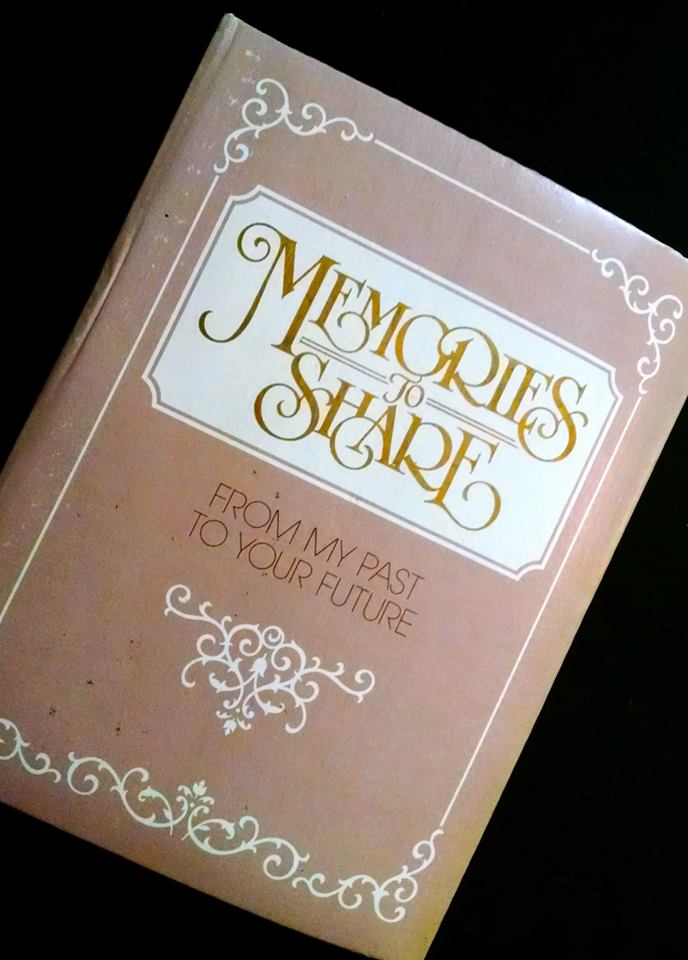
Though she passed in 2004, the book didn’t find its way to my hands until 2014: many of its stories and secrets remained unknown to me until over a decade after her death. Its underlying theme, however, hardly came as a surprise: she believed in using theatre to motivate young minds – in particular the minds of young women.
It was Grandma Mazer’s influence that led me to wear a princess costume to my early childhood birthday parties. Finished with elbow-length Dress N’ Dazzle gloves and a rhinestone tiara, secured by brightly colored mini-clips, I’d slip into “character” to combat low self-confidence and face classmates around whom I was shy at school. I could find my “self” sometimes, clearest of all, on a stage of my own creation – complete with Cherry Merry Muffin flare.
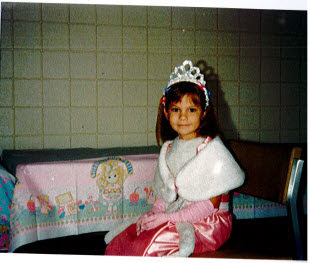 When I write nonfiction, my mind can’t help but carry theatre onto the page with me; I am constantly, if subconsciously setting up a scene. My undergraduate experience culminated with an exploration of “premature memoir,” examining raw, creative nonfiction – using stories from my own life as an experiment. The project unlocked a curiosity inside of me about the power buried in personal narrative, particularly when reflected back through in-process art.
When I write nonfiction, my mind can’t help but carry theatre onto the page with me; I am constantly, if subconsciously setting up a scene. My undergraduate experience culminated with an exploration of “premature memoir,” examining raw, creative nonfiction – using stories from my own life as an experiment. The project unlocked a curiosity inside of me about the power buried in personal narrative, particularly when reflected back through in-process art.
Thus, I entered my legal career with a personal credo based in theatre and creative nonfiction – which was a fascinating perspective when I found myself, months out of college, clerking in the Homicide and Forfeiture Divisions of a state prosecutor’s office. In Forfeiture, I frequently “worked the window,” a task that included explaining to anxious parents and spouses, from behind bulletproof glass, why their cars and personal belongings had been seized (in conjunction with criminal activity committed by their loved ones, typically drugs or solicitation – often without their knowledge); in Homicide, I worked cases that involved police shootings and murdered children. I was the bearer of some profoundly traumatic news early into my adult career, and discovered I had a knack for it – which isn’t to say I enjoyed it. I learned about the tragic unfairness in the American criminal justice system from the mouths of those affected by it personally. And I learned that my way through it came from the power of theater.
As my human self, I wanted to break a thousand times a case – but as a character? As a character, I could step into a courtroom and be invincible. Victims and their families didn’t need my tears, they needed my help – and that’s precisely what I gave.
In DC, my initial position with the DOJ boiled down to an ability to spot legal issues in personal narrative – specifically thousands of backlogged immigration appeals, most filed pro se (meaning: drafted by the defendant – in this case, the immigrant facing deportation). I personally read and worked on hundreds of cases, some involving mediation. This job led to others within the government, including the D.C. U.S. Attorney’s Office, Homicide Section; for additional experience, I participated in several ride-a-longs with various precincts and sections of the D.C. Police. Later, as a federal public defender in a neighboring district, I learned and litigated stories of tragedy and desperation – now from the other side.
The security clearance I carried while employed by the government enabled me to volunteer at the White House, where I assisted on holiday events during the first term of the Obama Administration. During this chapter of my life, I heard stories from victims and veterans, convicted criminals and celebrities – forever fascinated by the threads that tied them all together.
The “inconvenient” timing of my mid-recession law career allowed me to hear stories from all sides of the criminal justice system. It also led me back to theatre – as an improviser. Because improv is unscripted, nonfiction narrative finds a way of slipping in—if not on-stage, certainly at the bar post-show. Again, I saw it – over and over: the power of theater.
On the other side of three improv programs, (plus a yoga teacher training), my brain has become a Venn diagram of theater, creative nonfiction, criminal justice, and meditation. I am ecstatic, albeit overwhelmed, to realize that the pieces of my professional past are starting to fit together – forming a picture I finally understand.
In a case of serendipitous timing: I received – and accepted – a scholarship to attend The Life Stories Institute at DC’s Theatre Lab (another church-covered-theatre near and dear to my heart). Life Stories trains theatre professionals to work with marginalized populations, developing original theatre (and film) from personal life experiences. I anticipate that this program – taking place next week – will help me to refine years of personal notes (and more recent months of outlining) into a streamlined plan of action to develop a scholarship-based program for girls, designed to build self-confidence:
The Starting Line (Mission)
MAZER RESIDENTS: inspired by Grandma Mazer’s love of theater, an arts advocacy program to teach girls and young women self-esteem-inducing spells through improv, civics, and creative nonfiction, crafted to harness the superpower of sharing personal stories to create social change.

Another piece of my personal folklore I’m unable to trace back to any clear origin story:
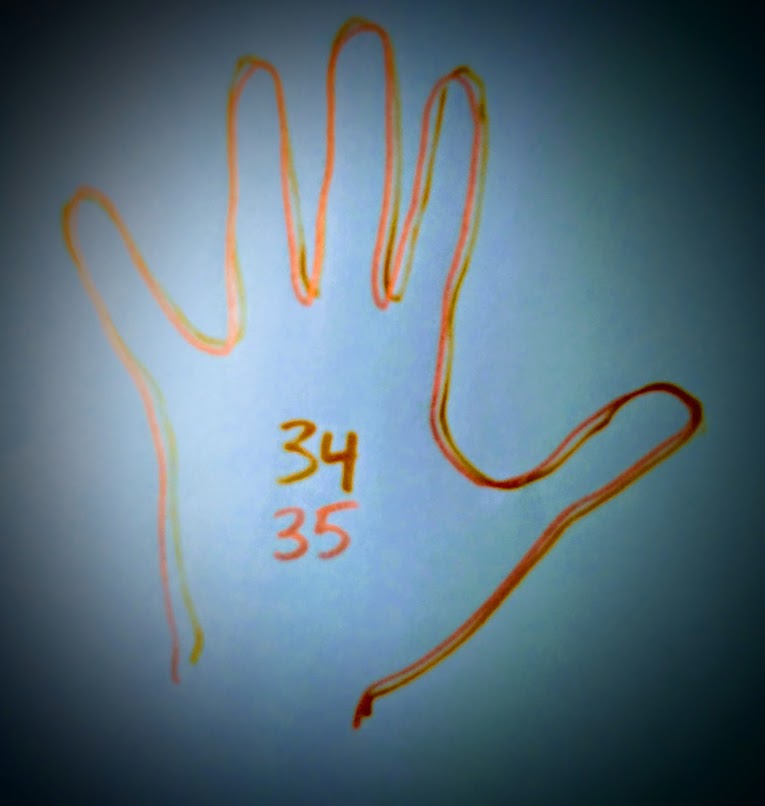
As a kid, I would outline my hand each birthday eve, then do it again when I woke the next morning to see if I’d actually “grown” overnight. I know growth doesn’t work that way, always have. Looking back, this tradition was more about verifying the lack of change that actually occurs on one’s birthday – my not-so-subtle note-to-self that growth takes time.
…So why post now?
Though still in its raw planning stages, I’m posting Part One of this piece on (what would be) Grandma Mazer’s 98th Birthday: she was a classy, compassionate badass lady of the theatre world – and forever a champion for women’s rights.
PART TWO to come post-Life Stories Institute… (UPDATE: It’s HERE!)
More of JMSunderduress you may enjoy…
BETWEEN TWO BEAUTIFUL BOOKENDS

